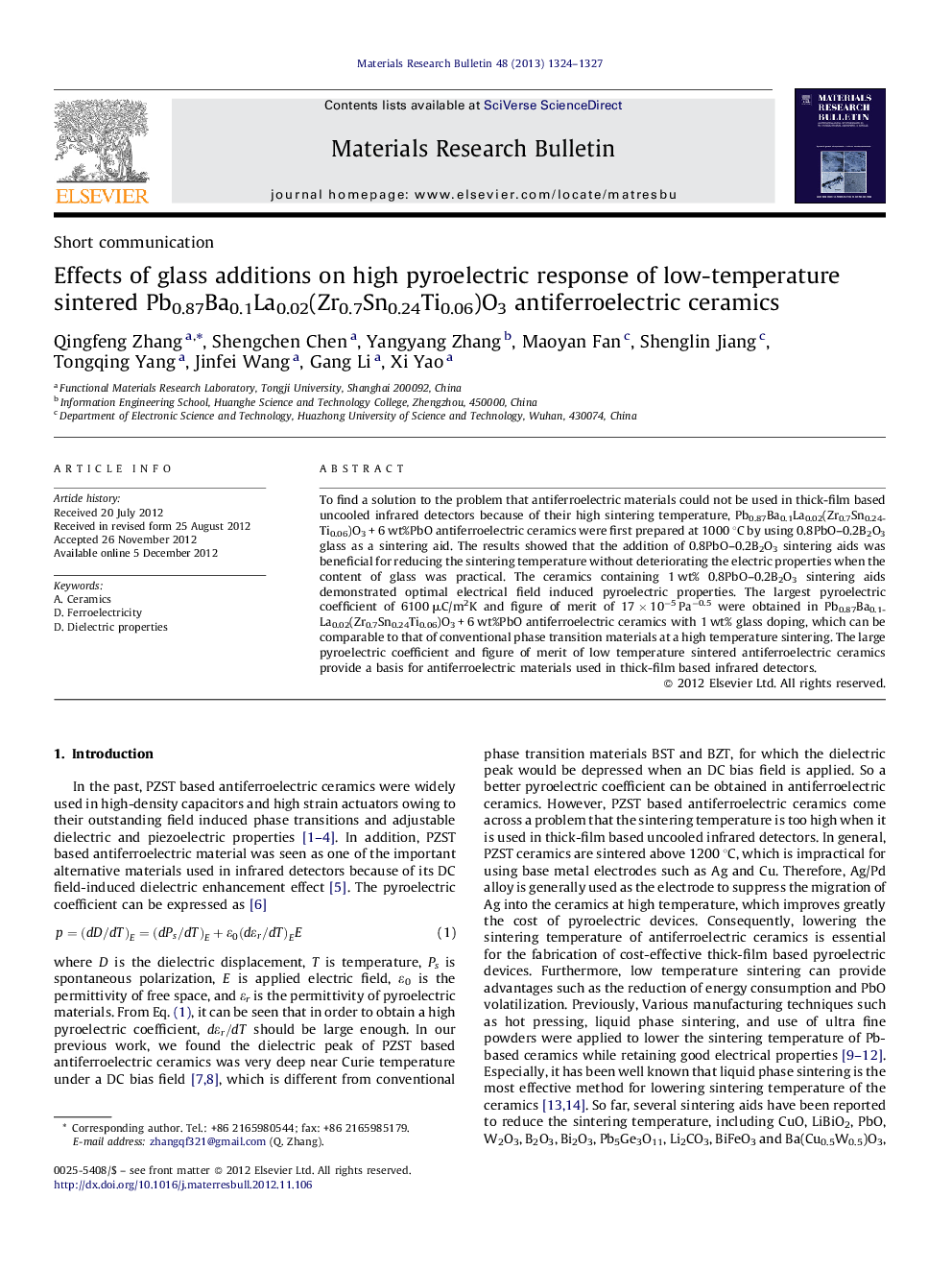| Article ID | Journal | Published Year | Pages | File Type |
|---|---|---|---|---|
| 1489540 | Materials Research Bulletin | 2013 | 4 Pages |
To find a solution to the problem that antiferroelectric materials could not be used in thick-film based uncooled infrared detectors because of their high sintering temperature, Pb0.87Ba0.1La0.02(Zr0.7Sn0.24Ti0.06)O3 + 6 wt%PbO antiferroelectric ceramics were first prepared at 1000 °C by using 0.8PbO–0.2B2O3 glass as a sintering aid. The results showed that the addition of 0.8PbO–0.2B2O3 sintering aids was beneficial for reducing the sintering temperature without deteriorating the electric properties when the content of glass was practical. The ceramics containing 1 wt% 0.8PbO–0.2B2O3 sintering aids demonstrated optimal electrical field induced pyroelectric properties. The largest pyroelectric coefficient of 6100 μC/m2K and figure of merit of 17 × 10−5 Pa−0.5 were obtained in Pb0.87Ba0.1La0.02(Zr0.7Sn0.24Ti0.06)O3 + 6 wt%PbO antiferroelectric ceramics with 1 wt% glass doping, which can be comparable to that of conventional phase transition materials at a high temperature sintering. The large pyroelectric coefficient and figure of merit of low temperature sintered antiferroelectric ceramics provide a basis for antiferroelectric materials used in thick-film based infrared detectors.
Graphical abstractFigure optionsDownload full-size imageDownload as PowerPoint slideHighlights► PZST antiferroelectric ceramics were first prepared at 1000 °C. ► The merit at 1000 °C is comparable to that of BST at a high temperature sintering. ► Large merit is because dielectric peak became steep under an electric field. ► Large merit at low temperature provides a basis for thick-film based detectors.
